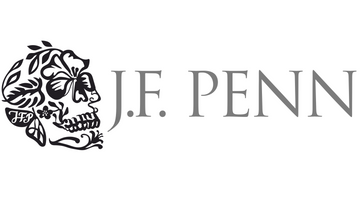If museum halls and cabinets of curiosity make your crime fiction heart beat faster, this list is for you.
These novels turn museums and collections into pressure cookers—where preservation meets obsession, and every artifact might be evidence.
1) Relic — Douglas Preston & Lincoln Child
Murders rock a fictionalized version of New York’s American Museum of Natural History on the eve of a blockbuster exhibit; chaos prowls the museum’s basements and halls.
Why this belongs here: Night-at-the-museum, but feral—specimens, dark corridors, institutional politics.
2) The Da Vinci Code — Dan Brown
The global smash opens with a murder inside the Louvre, dragging symbologist Robert Langdon through galleries, symbols, and secrets.
Why this belongs here: The Louvre becomes a crime scene and a puzzle box all at once.
3) Murder at the British Museum — Jim Eldridge
London, 1894. A scholar is found stabbed in a locked stall at the British Museum just before a talk on “The Age of King Arthur.” Private sleuths Daniel Wilson and archaeologist Abigail Fenton take the case.
Why this belongs here: A classic whodunnit staged in the stacks and corridors of a Victorian museum.
4) Desecration — J.F. Penn
A murder inside London’s infamous anatomy collections pulls DS Jamie Brooke and researcher Blake Daniel into a web of medical history, body-mod culture, and grief. An ivory anatomical Venus becomes a chilling clue, and the Hunterian’s jars and waxwork bodies haunt every page.
Why this belongs here: It’s a true “curiosity cabinet” thriller—museum setting, historical dissection lore, and artifacts that feel alive in the worst way.
Click here to check out Desecration
5) The Paleontologist — Luke Dumas
Dr. Simon Nealy returns to his Pennsylvania hometown to take a job at the decaying Hawthorne Museum of Natural History, the very place where his six-year-old sister vanished years before.
As the museum—still shuttered by the pandemic—groans with strange noises and ominous footprints, Simon confronts a murderous, possibly prehistoric-tinged haunting and unearths his predecessor’s diaries, which point to a mystery rooted deep in deep time.
Why this belongs here: The museum isn’t just a backdrop; its fossils, archives, and failing infrastructure become the engine of a ghost-and-grief investigation set amid natural-history exhibits.
6) The Art Forger — B.A. Shapiro
A contemporary art-crime thriller orbiting the 1990 Isabella Stewart Gardner Museum heist—13 works stolen, still missing—where a struggling painter enters a high-stakes forgery game.
Why this belongs here: A modern cabinet of curiosities: provenance, pigment, and the ethics of authenticity.
7) The Bone Vault — Linda Fairstein
At the Met’s Temple of Dendur gala, a deadly mystery surfaces: a young researcher’s body is discovered shipped in an ancient sarcophagus, amid a Met/AMNH exhibition partnership.
Why this belongs here: Museum logistics meet murder—the back-of-house world (crates, loans, loading docks) turns lethal.
8) The Cloisters — Katy Hays
At the Met’s Cloisters in Manhattan, a circle of researchers chases a rare tarot deck and stumbles into obsession and crime.
Why this belongs here: A moody, scholarly thriller where a museum’s medieval aura sharpens every secret.
9) The Cabinet of Curiosities — Douglas Preston & Lincoln Child
A grisly cache of century-old bodies is found beneath Manhattan; Pendergast teams with an archaeologist as clues point to a long-lost cabinet of curiosities and experimental horrors.
Why this belongs here: The title says it—history’s oddities, dangerous science, and museum archives collide.
Bonus: why museums make perfect crime scenes
-
Artifacts as witnesses: In Desecration, a waxwork anatomical Venus becomes a narrative fulcrum—half-teaching tool, half-memento mori.
-
Institutional pressure: Big-ticket exhibits (from “Superstition” in Relic to high-society galas in The Bone Vault) create deadlines, donors, and motive.
-
Dark history in bright spaces: Even modern galleries can sit atop disturbing pasts—see the way Desecration mines the Hunterian’s 18th-century anatomy and “resurrection men” lore.
Written with help from ChatGPT. Image by Midjourney.






